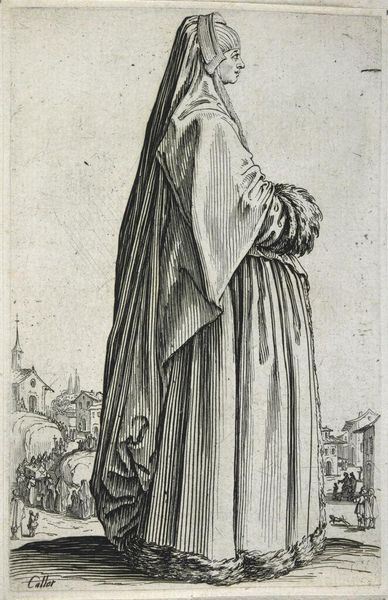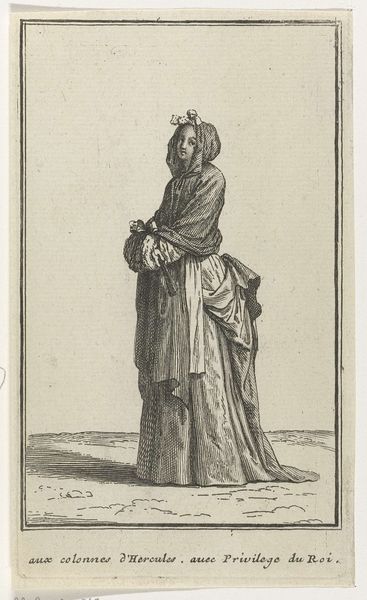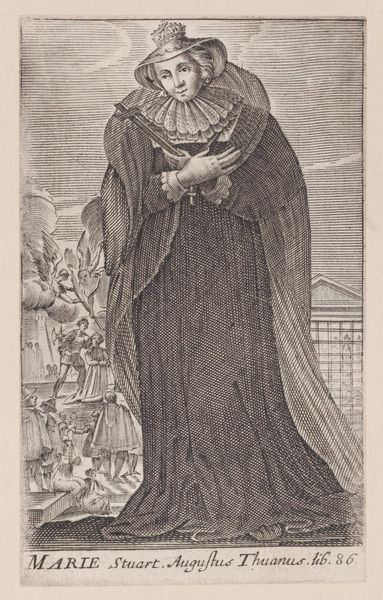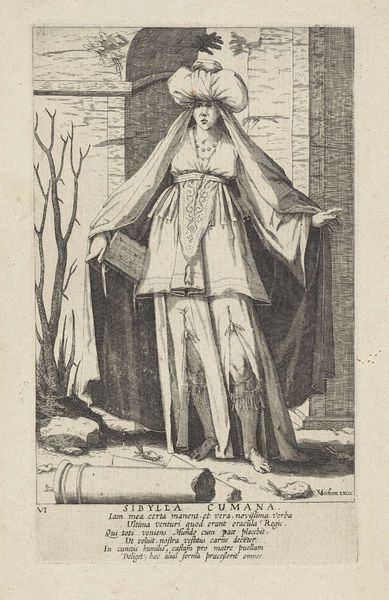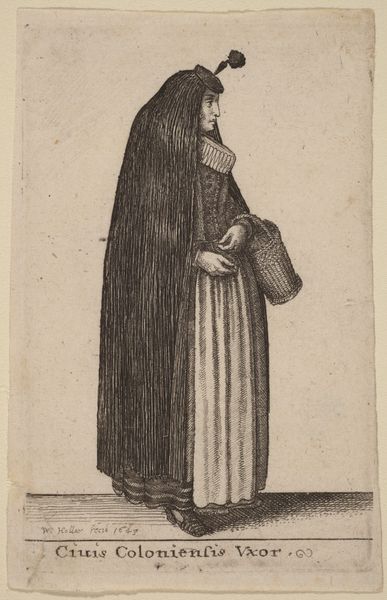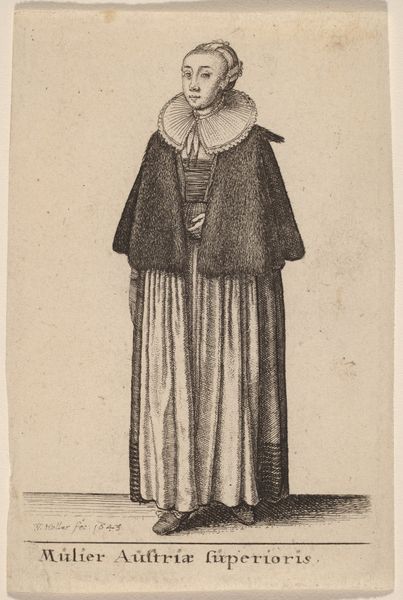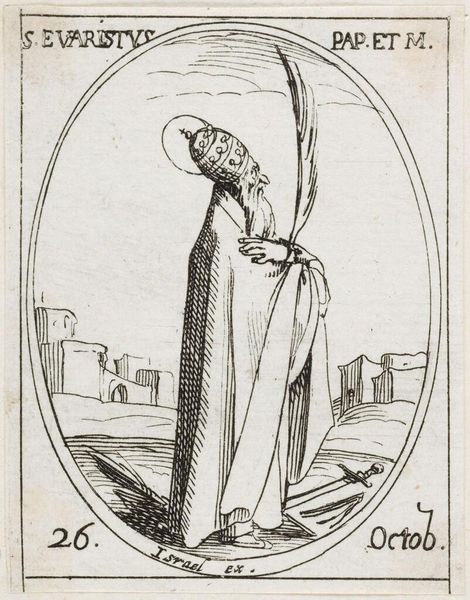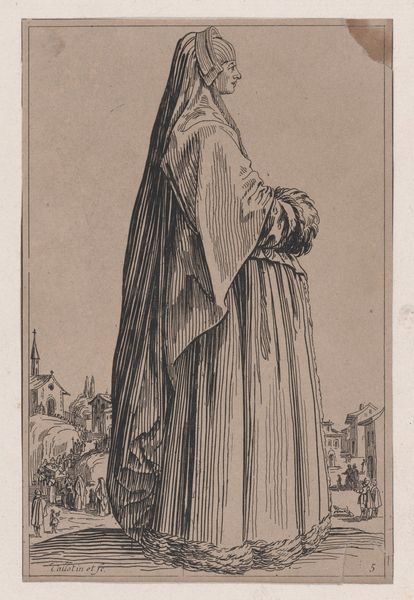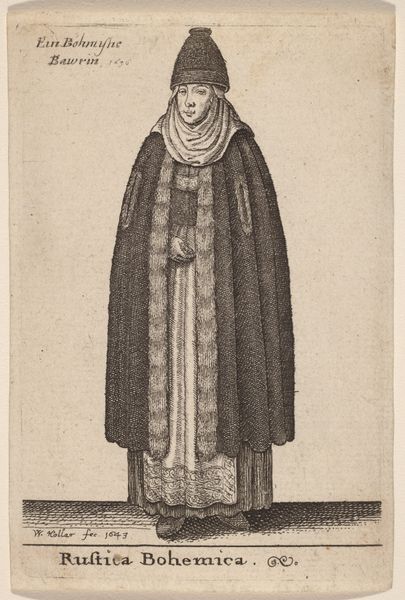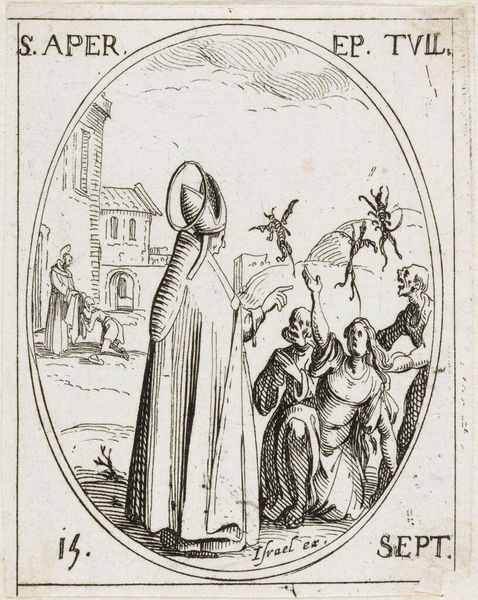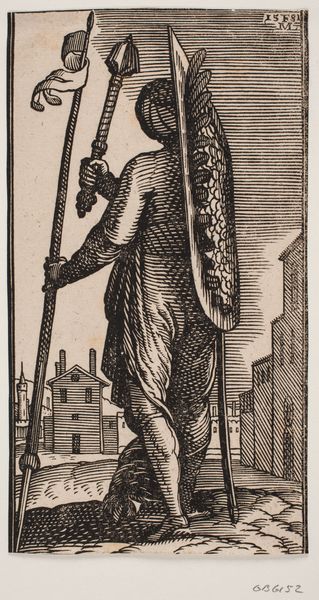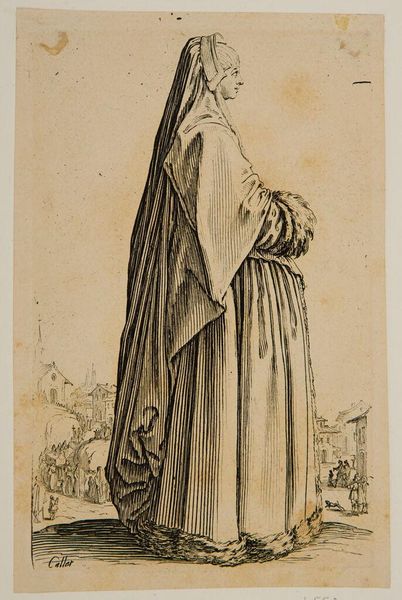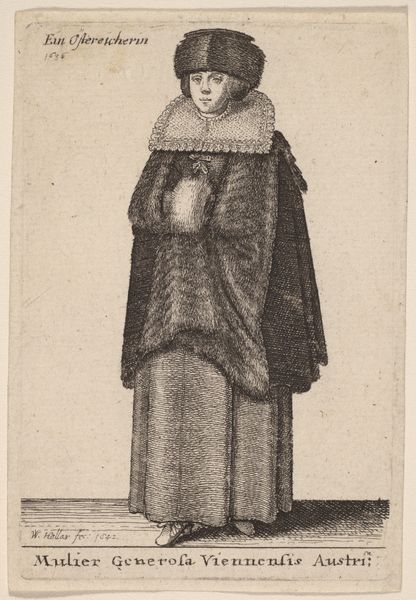
Tilsløret, gående kvinde, profil mod v.; foran hende rejser en bymur med tårne sig af vandet 1582
0:00
0:00
drawing, print, ink, woodcut
#
drawing
# print
#
landscape
#
figuration
#
ink
#
woodcut
Dimensions: 197 mm (height) x 132 mm (width) (bladmaal)
Editor: So, this is "Veiled Woman Walking, Profile to the Left; In Front of Her, A City Wall with Towers Rises from the Water," a woodcut in ink by Melchior Lorck, dating back to 1582. I’m struck by the woman's anonymity – she's completely veiled. It makes her feel strangely distant and yet central to the entire scene. What do you make of it? Curator: I'm drawn to how Lorck situates the female figure within a fraught geopolitical context, inviting us to consider issues of gender, power, and representation. Think about the 16th century – a period of intense exploration, colonization, and religious conflict. Does the woman's veiled presence symbolize cultural encounters, perhaps even the veiled realities of women within these power structures? What’s hidden from our view? Editor: That's interesting. I hadn't considered it from that angle. The city in the background… is that significant? Curator: Absolutely. The city looms, partially submerged, almost threatening. Consider it as a metaphor for established orders challenged by forces of change – whether that be the reformation, burgeoning capitalism, or perhaps the rise of powerful new empires. And where does that leave this lone female figure, poised between anonymity and visibility, the personal and the political? Does she have agency? Editor: So, her veiled state isn't just about modesty, but perhaps about power dynamics? A way of both concealing and perhaps, subverting, the established order? Curator: Precisely! The veil, a potent symbol of both oppression and resistance, becomes a focal point through which we can examine identity and social structures in this moment in history. Editor: This gives me a lot to think about. I initially saw a simple, almost melancholic figure, but now it's clear she embodies complex societal tensions. Curator: It reveals the importance of examining artwork beyond aesthetics, using history and theory to unearth the profound narratives they hold.
Comments
No comments
Be the first to comment and join the conversation on the ultimate creative platform.

